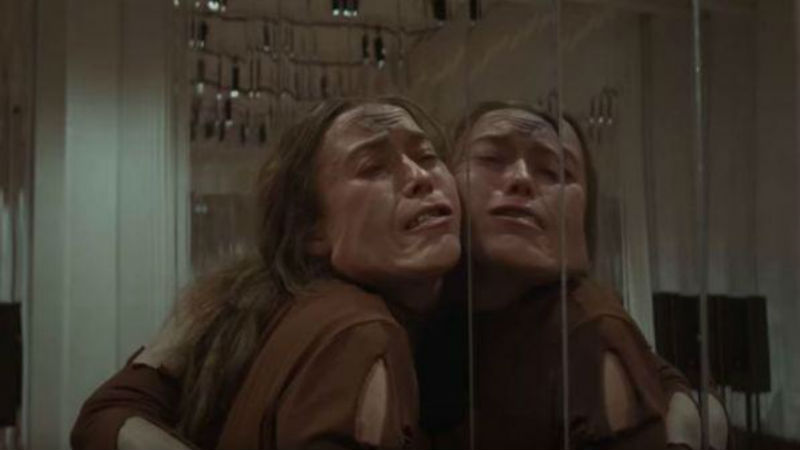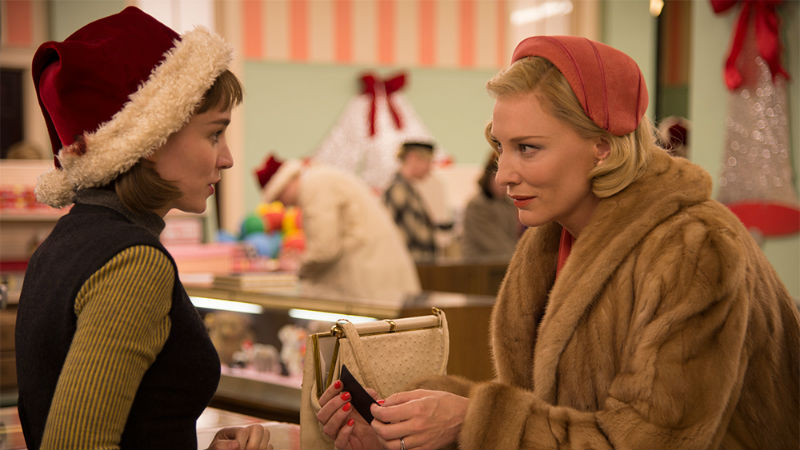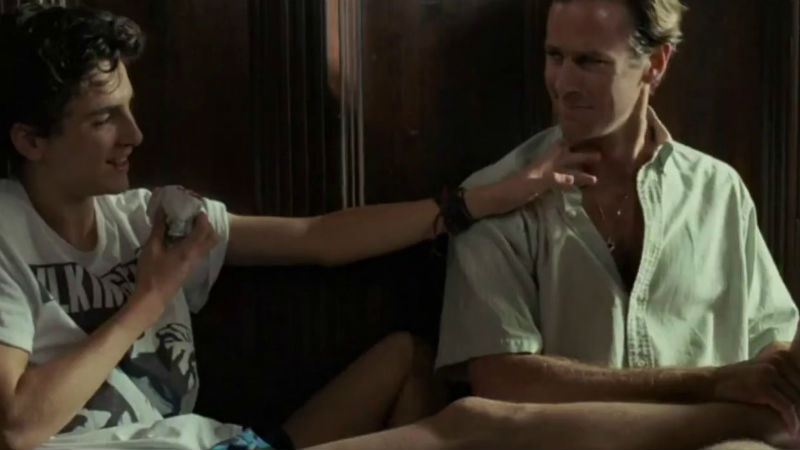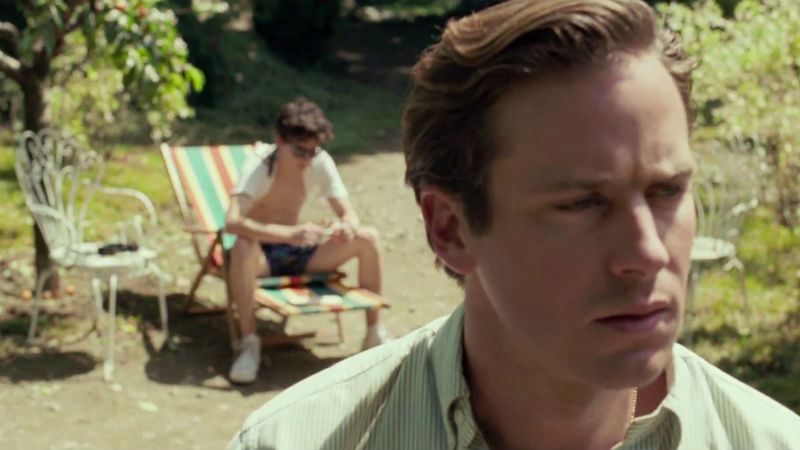It’s big clit vs small dick energy in Luca Guadagnino’s remake of Suspiria, an aesthetic update of the original by turns confounding and magical – that neon soaked Argento look is replaced by the muted palette and instagram friendly architectural design/framing of Guadagnino. There’s enough glass brick on display to make you think twice about throwing stones, and enough conflicting, contradictory messages by this movie to have you frustrated, stupefied and eager to come back for more.
Dakota Johnson is the young American gone to Berlin to join a ballet troupe. We already know that her predecessor, played by an energetic Chloe Grace Moretz, has disappeared after ranting about a cult of witches, but rumour bounds that she has joined The Baader-Meinhof group. Johnson, shy but talented, finds more than just herself. There is, of course, some madness lurking in the halls of the Markos Dance Academy.
But there’s fairly little DNA shared with the Argento original. A fondness for split-focus dioptre shots aside, the closer comparative point is Possession, that masterpiece of writhing bodies in Berlin. That’s because Suspiria is far less interested in copying the emotions of the original than it is with taking a few of the themes and ideas (particularly that of displacement and cultism) through a modern lens. There have been countless comparisons to Aronofsky’s Mother! (2017) Which need to stop right here. Aronofsky’s edgelord antics mistake intensity with psychological intimacy. Guadagnino has far more control, each shot is charged and every cut purposeful. It’s a high style, high energy film that confounds genre, rebukes narrative threading, and is a far more exciting, bewitching film for it.

Everyone in Suspiria is in a cult. Whether it’s the Mennonite community Johnson comes from, the dance crew, the coven of witches, the terrorist cells in the background, noisily grabbing our attention, or the weight of a Nazi history that oppresses the characters, the cast is divided into cliques. Guadagnino wants to know how these interact, and whether they define us. That’s why the Berlin setting is integral, and why close ups of stamps on passports or on train lines, contain a communicative power that might catch you off guard.
Suspiria is fascinated by lines of communication and travel, about what throbbing power comes from within. That’s his egotistical flourish. The director speaks to us through these lines: love me, appreciate me. We’re all sort of in the Guadagnino cult no matter where you stand on the man’s work. I’ve always found him a difficult filmmaker, one in thrall to auteurism who uses his influences (especially the Italian New Wave and Rohmer) as a shorthand to Arthouse success. Art is always political for Guadagnino, who here uses dance like Call Me By Your Name (2017) used archaeology, or A Bigger Splash (2016) used music. To allow the character to visually express their soul. But here, he finds a groove by speaking almost directly to us. It is his dance, precise and cut in service of the story.
This is a guy who used the lush setting of his gay Merchant Ivory pastiche as an excuse to ogle the young women on the film’s periphery. It’s hard to buy him as more interested in women’s’ stories than his own. “I’m the hands” Mother Suspirium says. A vision of feminine oneness is all that the film can tentatively explore, the story representing a vague return to a more primal, earth mother vision of femininity. As the faculty and students celebrate around a vast dinner table in a cafe dressed as though Parisian (simulacrum comes up again and again), Tilda Swinton and Johnson sit at opposite ends, staring at one another in malevolence. Female pain is avoided and instead the film observes interior turmoil and bodily transience. Scenes in the mirror room where characters see themselves fully for the first time, or one key character literally pulling their chest open to expose their insides, are obvious symbolism that is actually quite welcome in such a glacially paced film.

Swinton delivers a bout of transformative performances that must be a nod to Peter Sellers in Dr Strangelove (Stanley Kubrick, 1964). Without spoiling too much, one appearance even has her staggering out of the wheelchair “mein Mother Susperium! I can walk!”. I see Swinton in a Guadagnino movie as a stand-in for the director – perhaps due to her presenter role in his debut The Protagonists (1999). Her roles as the stern dance instructor is full Swinton, with a subtle arc that really hits at the film’s climax. But it’s her heavily made up role as octogenarian German man Dr. Jozef Klemperer that deserves plaudits. It’s through his story that Suspiria really covers its key theme of generational trauma, as his softening coincides with his reckoning. It’s a shame that the promotional trail has reduced this performance to Andy-Kaufman-esque hoaxes, because taken on its own merits Swinton is doing her best work in years.
Johnson wins the screen by doing little outside of the extraordinary physical dance moments – like her mother there is a sensuality that she is confident to let sit. Then Jessica Harper from the original shows up in a small but vital role. Her face, older, but warmly recognisable, is the perfect meta-moment for a scene about the clash of the past and present. Guadagnino frequently uses this doubling of text and meta-text, like subverting the creative effects of the original for an infrequent pulse of CGI blood. It operates as a distancing effect. There’s enough going on that even if half of the film doesn’t work for you, there are half a dozen more elements that do pay off. Guadagnino doesn’t just eschew the original, he seems disinterested in the entire supernatural element of the film. Suspiria is really about all the other stuff, and when the witches get out of its way, it works like gangbusters.
Suspiria premieres at the BFI London Film Festival taking place between October 10th and 21st. It then shows at trhe Cambridge Film Festival, between October 25th and November 1st. It’s out in cinemas on Friday, November 16th.














